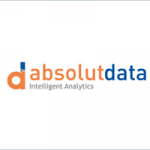 In 2018, AI (Artificial Intelligence) will be at the forefront of major developments in marketing. As this emerging technology becomes more available to marketing professionals, here are a few capabilities adopters can expect over the months to come.
In 2018, AI (Artificial Intelligence) will be at the forefront of major developments in marketing. As this emerging technology becomes more available to marketing professionals, here are a few capabilities adopters can expect over the months to come.
1. Real-Time Behavioral Indicators
The digital footprint we all leave as we go through our daily lives is opening new doors for behavior-based marketing. Simple personalization is maturing into the ability to read real-time buying signals, witness trends emerge and die, and detect even temporary shifts in preferences. Knowing an individual’s buying preferences and needs at a point in time, then matching that up with where an individual is in their buying journey is powerful and possible.
2. Dynamic Segmentation
The long-held approach to segmenting based on interests and broad demographics will start to be replaced by smarter segmentation and targeting. Individuals, whether consumers or B2B buyers, experience unexpected changes in their buying patterns, roles and budgets. When it comes to segmentation, AI can spot emerging segments, group buyers in unique ways, and match prospect groups based on new offerings. Gone are the biases and pre-conceived grouping inherent in the typical grouping approach prevalent today. AI can group engaged prospects based on their current actions and behaviors.
Also Read: Absolutdata Introduces NAVIK AI for Marketing and Sales Effectiveness
3. Customer Directed Marketing
Customer Directed Marketing will be the single highest-impact movement in 2018. Campaigns, messaging and full engagement paths will be increasingly driven by customer actions rather than the marketer. The ability of AI to interpret the actions of individuals and predict outcomes based on current behavior will guide marketers to the next best engagement. Actions of individuals will increasingly drive the relationship. This represents a shift from the marketer creating a pull to the customer driving the buyer journey.
4. Fewer Campaigns, Higher ROI
Mass campaigns are going away. Who wants to spend marketing dollars on someone who will never become a customer? On the flip side, people don’t want to be blasted with irrelevant info. AI allows marketers to be more aware and agile, focusing on the most receptive audience at a given time. Although AI might generate more actual campaigns in terms of variety—even a campaign for one person—each offer will be sent to fewer, more suitable prospects. We see a sizable drop in irrelevant communications and a much-improved response rate due to quality targeting.
Also Read: How CMOs Can Turn Analytics into their Secret Weapon
5. More Creative Thinking, Less Routine Work
Some of the mundane marketing tasks will be done by technology. Projects like dicing target audiences, researching personas, managing review cycles, integrating sales and marketing automation systems, conducting A/B tests, creating pivot tables, running surveys, etc. With AI, marketers can now capture segments as they emerge. The creative mind can be inspired by customer behavior or by crowd-sourced interests. A/B tests happen on the fly. Data does the work of repetitive review cycles. The incoming data spawns innovative new ideas for staying ahead of the game, and it highlights new creative trends that we might otherwise miss.
6. Marketing Tech Stack Consolidation
There are literally thousands of marketing tools available. AI will drive the consolidation and, in some areas, elimination of tools. A new class of high-efficiency marketing solutions is already performing both simple tasks and highly complex work. Tech stack spends will start to focus on ensuring data sources are of high quality, especially as real-time data will become a key competitive advantage for marketers.
Also Read: How Key Customer Loyalty Drivers Have Changed Over the Last Decade
7. Higher Quality MQLs for the Sales Pipeline
For B2B marketers, the all-important MQL (marketing qualified lead) will represent more promising revenue opportunities with AI. Typically, MQLs are based on a simple lead score or a static set of actions taken. But prospects can go from consideration to having a budget in a flash — or it may take months. With AI, movement along the buying journey will become easier to observe. Since AI can better detect less obvious buying signals, it turns the one-dimensional lead score into a multi-dimensional indicator. This produces MQLs that are more likely to turn into revenue — a win for both sales and marketing.
8. The Emergence of New Buying Journeys
Buying journeys are the series of actions a customer or buying group takes before spending their precious dollars. Static maps of these journeys are often used by B2B and B2C marketers to drive communication strategies. In reality, there are numerous buying journeys and they tend to meander. They vary by group, by the consumer, and even by the transaction. AI can recognize and model a wide variety of buying signals, detecting repeated buying journeys and identifying new ones as they unfold.
AI has hit some rough patches in its early days. Some even consider it creepy. But for this consumer, B2B buyer, and marketer, AI will be a big win in 2018 — no matter what side of the campaign I’m on.
Recommended Read: How Can We Take Facebook Marketing to the Next Level?











